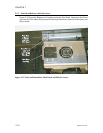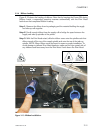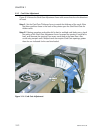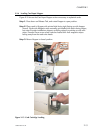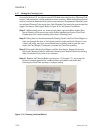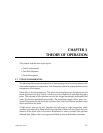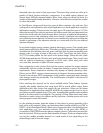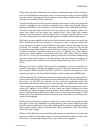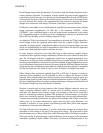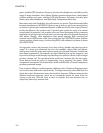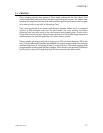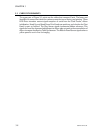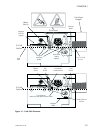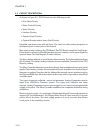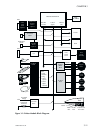Not all images require high dot densities. The need for high dot density decreases as the
viewing distance increases. For example, a large roadside sign may require separations
screened at only four lines-per-inch. Sucha sign would appear like a mosaic of CMYK dots
if viewed from too close a distance. Note that press men use lines per inch instead of dots
per inch, because they image color separations through screens to generate dot-based
images from continuous-tone images. However, both refer to picture resolution.
Pixelization, or the ability to see individual pixels, typically becomes a factor when a digital
image undergoes magnification. At 300 dpi, a dot measures 0.00333... inches
(0.081666... mm). Individual pixels in such an image remain unobserved to the naked
eye. Observable pixels do not show up until a magnification reduces the resolution well
below 200 dpi. Notably, monitors display images at 72 dpi.
An original at 72 dpi is at a threshold. Any magnification of pixels of a 72 dpi original for a
screen image occurs by repeating pixels taken from the original. Higher resolution
originals can sustain greater magnifications before the need for repeats begins. In other
words, an original bitmap can only be magnified so much before the need for duplicated
pixels occurs and pixelation begins to become an issue.
In raster systems, where line scans take data from a video memory, graphic objects
comprised of lines typically undergo antialiasing. Without this, lines created at other than
zero, 45, 90 degrees and their complements would have a jagged appearance. Line
Generators can only put data in available dot positions in a video memory. In effect, each
line-dot generated lands on the closest dot position available. A jaggedappearance occurs
as one axis element has intervals that stay the same while the other axis element marches
along step-by-step. Antialiasing compensates for a lack of ideal dot positions by averaging
the line-dot intensities with those of near-by dots. An illusion of straight lines results.
Office Printers offer resolutions typically from 300 to 600 dpi. A degree of resolution
reduction (down sampling) can be tolerated in order to reduce the amount of data
required. When a file size needs to be kept in check by not exceeding a viewer's needs, the
printed image should typically tolerate a resolution reduction to about 180 dpi. Typically,
the down-sampling process occurs by averaging pixel groups, with group size afunction of
the desired change from one pixel density to another.
Because a monitor and a printer produce color through different methods, users can
expect somewhat different results. A monitor uses an additive process, meaning a
particular color derives from intensity control. For example, a color moves toward the
green by intensifying excitation of green CRT phosphors. Printed images, on the other
hand, use a subtractive process. These images display their color through reflected light.
To generate a particular printed color, the process must subtract (that is, filter out and not
reflect) parts of the source illumination, which then lets other parts dominate. For
example, a reduction in cyan (greater cyan filtering) would allow yellow and magenta
components to become more dominate.
The light reflected off of the surface of a white card passes through any colored dyes
deposited on the surface of the card, both going and coming. The dyes used to form
printed images serve as filters of light that would otherwise reflect off of what is typically a
white print media. In printed images, complete filtration (or what serves as the maximum
subtraction capability) results in black. Conversly, the absence of filtration results in the
3-4 980264-001 Rev.B
CHAPTER 3



